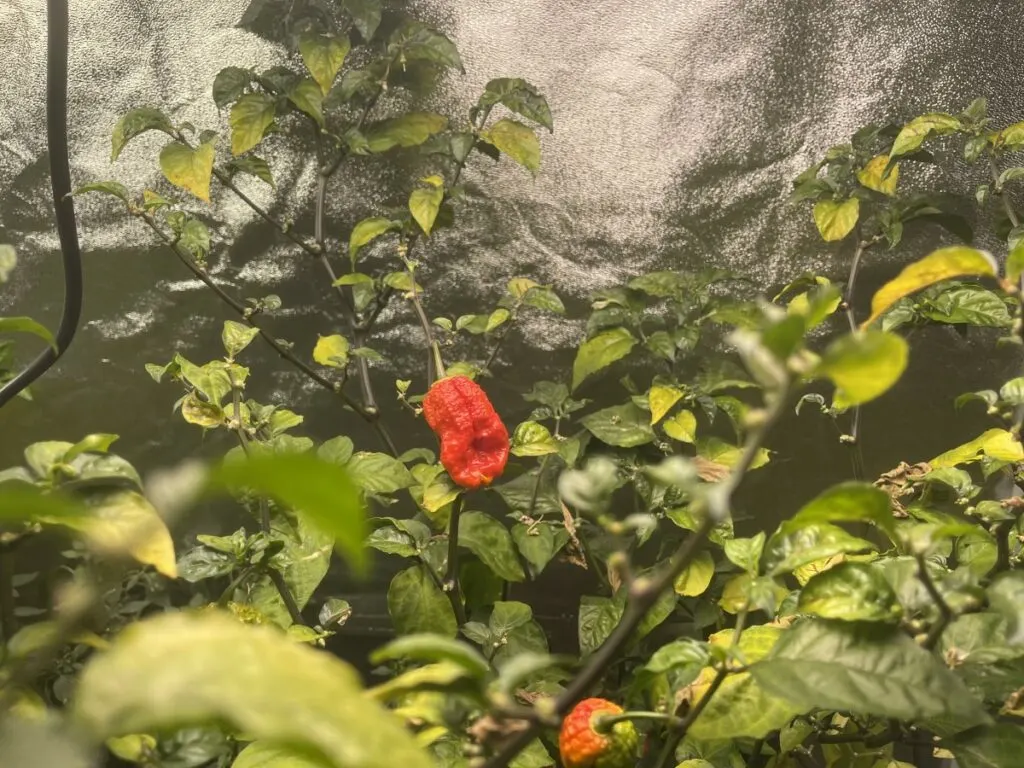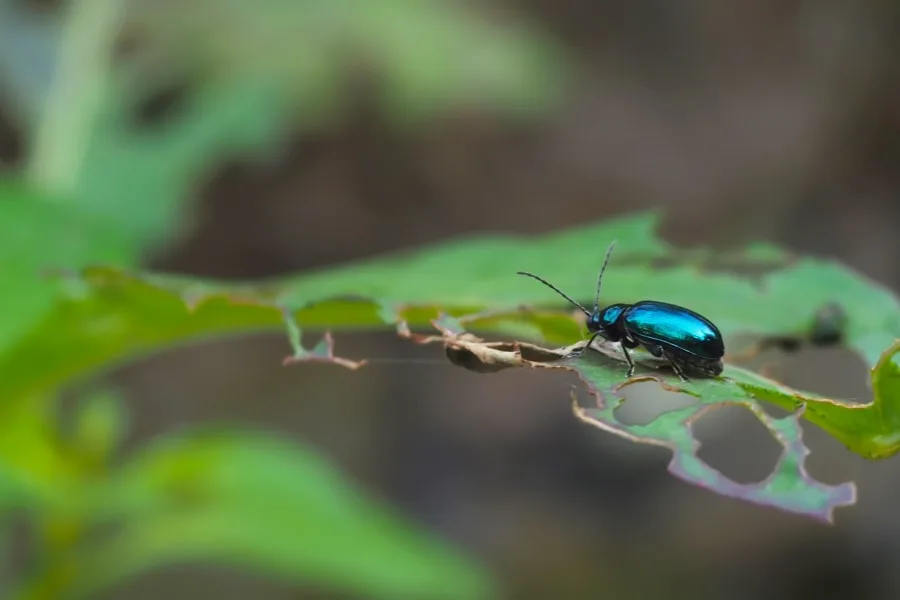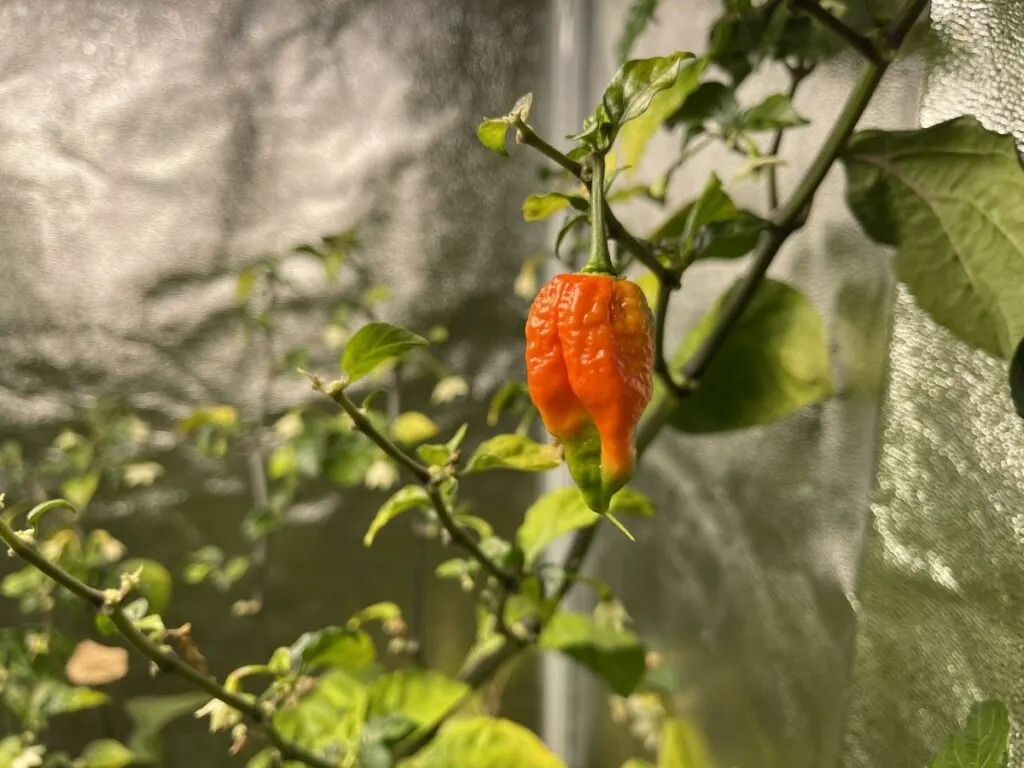After weeks of watching your Carolina Reaper pepper plant grow, you start to notice black spots on its leaves, peppers, or other parts of the plant. Before you throw out your plant in despair, let’s look at the reasons why your plant is doing this and if there are any steps you can take to address the issue.
The pepper may be turning black because of sunscald, insect damage, diseases, or the natural ripening process. There’s also a specific type of Carolina Reaper which naturally turns dark brown to black, known as the Chocolate Reaper.
Today we’ll dive into why your Carolina Reaper plant is turning black and discuss some things you can do to start healing your plants. Let’s get started!

1. The Carolina Reaper Peppers Are Sunburnt
Carolina Reapers, like any other plant, need sunlight. The Reapers actually do pretty well in the sun, usually doing best in open light. However, Carolina Reapers can also be sensitive to the sun and, if exposed too long, will begin to turn black.
When a Reaper plant begins to turn black from too much sunlight, it’s known as sunscald. Sunscald is a common occurrence in plants that are exposed to too much heat and light. Usually, this occurs when the plant is placed in direct light for too long.
You will know if your Carolina Reaper pepper plant is suffering from sunscald if you notice white or black spots on the pepper’s fruits or leaves. We noticed some of the leaves of our Carolina Reaper pepper plant started to get white spots as it grew tall and got too close to our grow lights. We had to raise our grow lights to accommodate the height and ensure that our plant did not get burned.
If you catch this early on and move your plant to a shadier location, then you should be able to prevent additional leaves and fruits from being burnt.

2. The Carolina Reaper Pepper Plant Has a Disease
It’s a tough break when after you’ve spent all this time growing a Carolina Reaper from a seedling, to later find out it has a disease. Some diseases are curable, while others can take the plant’s life. Most of the time, when Carolina Reapers develop a disease, it’s bacterial.
Bacterial diseases in plants cause problems with the stem, leaves, fruits, or blossoms. In the case of a Carolina Reaper, the plant often develops dark spots on the leaves, which, if left unattended, can be completely black. You may also notice the stem turning black, and eventually, the peppers as well.
When it comes to bacterial diseases, there are a variety of different types, and most infections affect the leaves more than the fruit.
You may notice that the underside of the leaves develop black water-like spots. If left unchecked and the disease progresses, those same water-like spots begin to turn greasy looking. This can cause major discoloration within the leaves of the plants, and you may also notice a release of fluids from those spots over time.
The best course of action is to remove any infected parts of the plant before it has a chance to spread to other, healthy parts. You should also remove the plant from other plants to prevent the disease from spreading.
If you notice black spots on your Carolina Reaper peppers, then your plant is most likely affected by blossom end rot. The main cause of blossom end rot is calcium deficiency, but hot temperatures and insufficient watering can also produce these black spots on your peppers.
The good news is that if you see a pepper with blossom end rot, you can still use the pepper and just cut off the affected part. In general, you can prevent blossom end rot by ensuring you’re using nutrient-rich, loamy soil and watering your plant adequately.

3. The Carolina Reaper Pepper Has Insect Damage
Insects attack all parts of a plant, and it’s not uncommon to see damage in the leaves, stems, and fruits.
While you may correctly assume the Carolina Reaper is too hot for any insect to enjoy, they do enjoy other parts of the plant. And, unfortunately, when the leaves and stems are damaged, they can pull nutrients from the entire plant, which means that the plant won’t produce good peppers.
The peppers in this situation may not produce fully and may have discoloration throughout if fully developed. You may also notice various holes and spotting through the leaves and stems.
The most common signs of insect damage in the Carolina Reaper are crumpled or distorted leaves, brown or black coloration, and yellow dots if the insects have sucked the leaf cell dry.
Some common pests include arachnids, mites, caterpillars, scale insects, and sucking insects. If you notice heavy discoloration, then you might be dealing with mites.
Depending on the insects, you could get rid of them by physically removing them off the plant. Prevention is definitely the preferred treatment here, and there are many organic pesticides to choose from to protect your plants from pesky pests.

4. The Carolina Reaper Pepper Is Ripening
Carolina Reapers are sometimes known for being a bit deceitful when they begin ripening. This doesn’t happen all the time, but sometimes the pepper can appear to be turning black and dying during the ripening process.
When this happens, the pepper turns dark brown or black before turning red. A black pepper doesn’t necessarily mean a problem with the plant, as many peppers begin to ripen completely normally after that. In fact, the black color can mean that things are going exactly according to how they should be.
Carolina Reapers take between seventy and ninety days after transplant before they mature, and during this time, the peppers can ripen in different colors.
Peppers normally go through a ripening process that begins with a light, almost lime-green coloration, and continues into yellow, orange, and then red.
In the case of Carolina Reapers and a few select other peppers, the pepper can go through a natural darkening process before ripening fully, where they start off green, but then turn a purplish hue before turning their mature red color.
In some cases, the pepper may stay black or dark brown in their mature form. We’ll discuss this in more detail below.
One important thing to note is that if this discoloration is due to the natural ripening process, then it will only affect the pepper and not the entire plant. In the case of disease, sunscald, and so on, you would see evidence of a problem on the entire plant.
5. You Have a Chocolate Variety of the Carolina Reaper
You may not have realized this, but Carolina Reapers don’t always mature to red or orange. There’s actually an entire species of the plant that grows in a darker brown to black color. These are known as Chocolate Carolina Reapers.
These peppers are equally as hot as their red counterparts, so don’t let the name fool you.
The plant looks exactly like traditional Carolina Reapers. If you didn’t mean to purchase Chocolate Reaper seeds, you wouldn’t notice a difference until the peppers fully develop. They would take on a dark brown to black color at this point.
While it may seem like the peppers are rotting at first glance, you’ll notice with a quick taste that the peppers are completely healthy. You shouldn’t see any spotting or mold on them if you have a chocolate variety of the Reaper.
